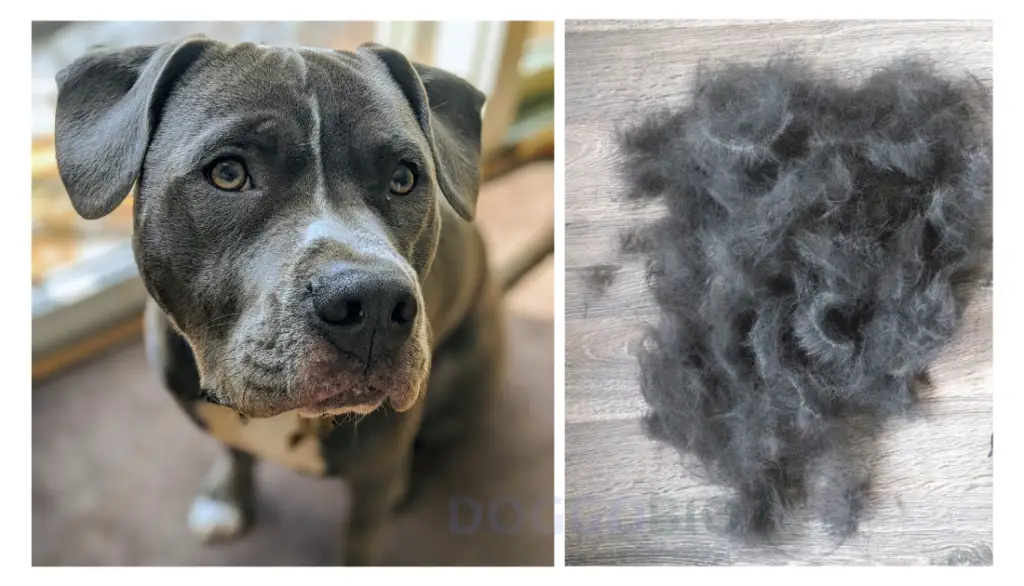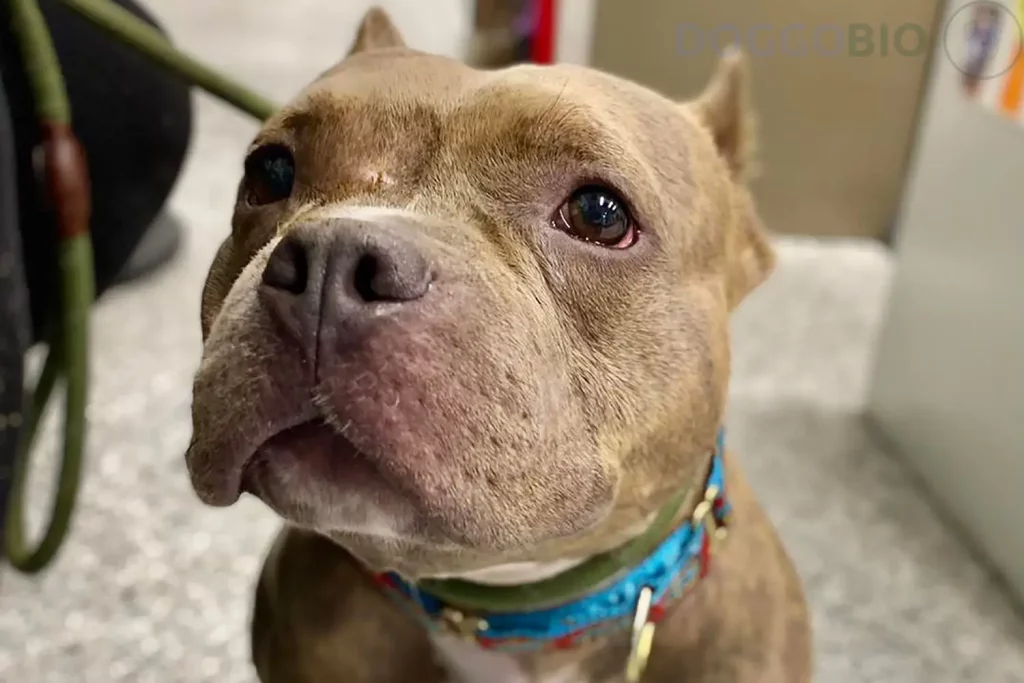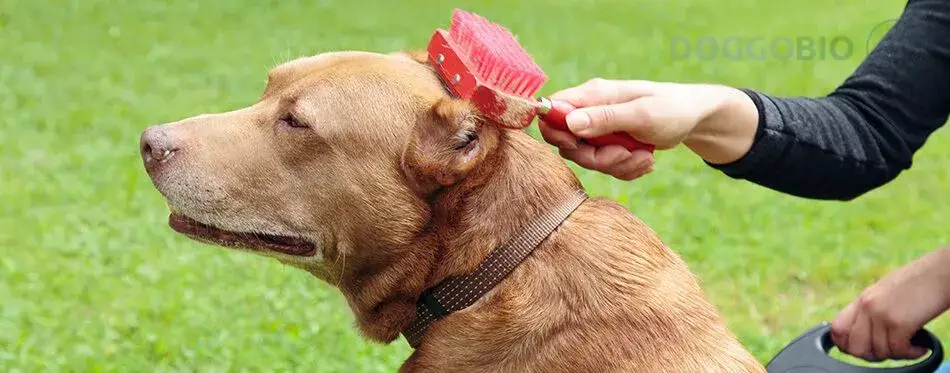Pitbulls, known for their strength, loyalty, and playful nature, have become popular companions for many dog lovers. If you’re considering bringing a pitbull into your home, you might be wondering about their shedding habits and grooming needs.
In this article, we will delve into the question, “Do pitbulls shed?” and explore the importance of dog grooming for these wonderful canines. Understanding how much pitbulls shed and how to properly groom them will not only help you maintain a clean and healthy living environment but also ensure your pitbull’s overall well-being.
So, let’s explore the shedding tendencies of pitbulls and learn about the essential grooming practices necessary to keep them looking their best.
Do Pitbulls Shed?

Yes, they do, but they are not considered heavy shedders. Their shedding level is generally low to moderate. Unlike some breeds with a double coat, Pitbulls have a single coat of fur, which means they do not have an undercoat that they “blow” or shed in large amounts during certain seasons.
Instead, they shed a consistent, minimal amount of fur throughout the year, regardless of the season. So, while you will notice some shedding, it’s not likely to be overwhelming or require significant additional cleaning.
Do Pitbulls shed more during certain times of the year?
Yes, Pitbulls do shed more during certain times of the year. Pitbulls, like many dog breeds, experience a natural shedding process year-round, with peak shedding seasons typically occurring during fall and spring.
During these times, they shed their winter and summer coats, respectively. Pitbulls have a single skin, meaning they shed daily, but do not have an undercoat to shed as some other breeds do.
While shedding is normal, excessive shedding can be a sign of underlying health issues, so monitoring your Pitbull’s shedding and ensuring it’s not excessive is essential. The shedding process involves transitioning from a heavier winter coat to a lighter summer one, which is vital for your pet’s comfort and health.
What is the Pitbull?

Before we delve into Pit Bull shedding, we must clearly understand what constitutes a “Pit Bull.” Many people mistakenly believe it is a particular dog breed, but it is a collective term describing a dog group.
To be more specific, Pit Bulls comprise four distinct pedigree pit-type breeds:
- The American Pit Bull Terrier
- American Staffordshire Terrier
- Staffordshire Bull Terrier
- The American Bulldog.
Therefore, when we refer to “Pit Bulls” in this article, we refer to all four breeds, which share striking similarities, including their coat types.
It is a well-known fact that almost all dog breeds shed, except a few rare hairless species. However, not all dog breeds shed to the same extent. Fortunately, Pit Bulls tend to shed approximately the same amount, regardless of the specific type. Shedding should not be a significant concern if you consider adopting a Pit Bull, as their coat type remains relatively consistent across all four breeds.
Information about Pitbull coats
Pit Bulls are often regarded as a relatively low-shedding breed regarding shedding. This can be attributed to their type of coat, namely the single coat. Unlike double-coated breeds with a top coat and undercoat, Pit Bulls have only a single layer of fur. The absence of an undercoat significantly reduces shedding frequency and severity, making them a more desirable pet for owners who prefer less shedding.
It is worth noting that while Pit Bulls may shed less than other breeds, they still shed consistently throughout the year. Shedding frequency may slightly increase during the spring and fall months, but it is not comparable to the infamous “coat blow season” experienced by double-coated breeds.
For owners of double-coated breeds, shedding season can be a nightmare due to the copious amount of fur that is rid. However, Pit Bull owners can sigh relief as they are spared from this tumultuous period.
In conclusion, the Pit Bull’s single coat significantly contributes to its relatively low-shedding frequency. While shedding is still present, it is considerably less severe than in double-coated breeds.
| Pitbull Breed | Coat Type |
| American Bully | Short coat, stiff, smooth, and shiny. Hair is softer and wavier than the others. |
| American Pit Bull Terrier | Short coat, shiny and soft, with hair close to the skin. |
| American Staffordshire Terrier | Short coat, shiny. The coat is similar to the American Pit Bull Terrier. |
| Staffordshire Bull Terrier | Short coat, smooth, close to the skin. Hair tends to be less stiff than the other Pit Bull breeds. |
What factors can cause Pitbull shed excessively?
When it comes to Pit Bulls, shedding is a certainty. Unlike low-shedding hypoallergenic dog breeds like the Maltese or Poodle, Pit Bulls are notorious for their tendency to shed. However, it is worth noting that shedding frequency can vary, and several factors contribute to this phenomenon.

1.Changing seasons
First and foremost, seasonal changes can significantly impact a Pit Bull’s shedding pattern. During the warmer months, dogs tend to shed more frequently to regulate their body temperature. On the other hand, dogs may shed less regularly when the weather is more relaxed as their bodies try to conserve heat.
2.Food and Diet
A Pit Bull’s diet can significantly impact its shedding frequency and overall coat health. If a dog’s diet is deficient in essential nutrients, it can lead to increased shedding and a dull, lackluster coat. Conversely, a diet rich in high-quality protein, vitamins, and minerals can help reduce shedding and promote healthy skin and coat.
3.Stress
Like humans, dogs can experience stress and anxiety, leading to excessive shedding. If your dog is experiencing significant stress, addressing the root cause and providing the necessary support and care is essential.
4.Bathing
Do you see your Pitbull shedding more hair than usual after a bath? It could be due to a recent change in their shampoo.
It’s important to note that some shampoos can cause dry, flaky skin or trigger increased scratching, which may result in more shedding.
If you suspect this to be the case, it’s best to talk to your veterinarian to find a more gentle shampoo that suits your dog’s skin type.
5.Medical conditions
Lastly, underlying medical conditions can also contribute to excessive shedding. If your Pit Bull is shedding more than usual, it is essential to consult with a veterinarian to rule out any potential health concerns.
In conclusion, while Pit Bulls may shed more frequently than other dog breeds, it is essential to understand the various factors contributing to shedding frequency. Addressing these factors and providing your Pit Bull with the necessary care and support can help reduce shedding and promote overall coat health.
Tips and tricks for managing your Pitbull’s shedding

1.Brushing
Brushing your Pit Bull is an essential grooming task that can prevent the spread of loose hair all over your abode. The frequency of brushing will depend on your dog, but starting with 2 to 3 times a week is recommended. However, you should increase the frequency if necessary.
It’s essential to exercise caution while brushing your Pit Bull. Injuries can occur from reckless brushing, potentially leading to even more shedding. Always make sure to check for any signs of pain while brushing.
Another thing to remember is to ensure that your brush’s bristles are clean before use. A dirty meeting can cause rashes on your Pit Bull’s skin, which can be very unpleasant for them.
2.Bathing
When it comes to Pit Bull grooming, bathing is a must, especially for these energetic dogs that love playing outside. However, be careful to do just what is necessary! A dog’s coat has essential oils that protect its skin, and over-washing can strip these natural oils away, leaving its coat dull and dry.
But what’s the right amount of baths for a Pit Bull? Since Pit Bulls have a smooth single coat, they don’t need to be bathed as frequently as other dog breeds. However, if your Pit gets into mud or dirt, cleaning them up is essential. Generally, it would help if you aimed to bathe your dog once a month, but this can vary depending on your dog’s activities.
And when you do bathe your Pit Bull, be sure to use a gentle shampoo specifically made for dogs. Human shampoo can irritate their skin and cause more shedding. And like with brushing, rinse thoroughly and dry your dog off completely to prevent skin irritation.
3.Nutrition and food requires
As Pit Bull owners, we all want our furry friends to live happy and healthy lives, and good nutrition is vital to making that happen. It’s no secret that Pit Bulls need high-quality food to maintain optimal health, but did you know that what they eat can also affect their shedding patterns?
According to experts, protein is essential to a Pit Bull’s diet. These dogs are relatively large with high energy needs, and protein is crucial for their muscle development and overall health. But it’s not just about the amount of protein – it’s also essential to consider the quality of the protein. Cheap dog food brands often use low-quality protein sources, such as chicken by-product meals, which can lead to shedding and other health problems.
In addition to protein, Pit Bulls need a well-rounded diet that includes vitamins, minerals, and healthy fats. It’s also essential to avoid common allergens, such as wheat, corn, and potatoes. These foods can trigger skin and coat problems, leading to excessive shedding.
But even if you’re feeding your Pit Bull high-quality food, it’s essential to be mindful of portion sizes. Overfeeding can lead to obesity, which can cause health problems and shedding. The recommended feeding schedule for an adult Pit Bull is once or twice per day, and always check the instructions on the dog food bag for the appropriate daily meal allowance.
So, in conclusion, a balanced and nutritious diet is essential for reducing shedding in Pit Bulls. By choosing high-quality dog food, avoiding common allergens, and feeding appropriate portions, you can help your furry friend stay healthy and happy – and keep shedding to a minimum.
Some Posts You Wanna Read More
- Grey Pitbull
- Tri Pitbull
- Blue Nose Pitbull
- White Pitbull
- Are Pitbulls Hypoallergenic?
- How Long Are Pitbulls Pregnant For?
- How Long Do Pit Bulls Live?
- Is Pedigree Good for PitBulls?
- Pitbull and Baby
Frequently Ask Question
1. Do blue nose Pitbulls shed?
Absolutely! Blue nose Pitbulls have short, smooth coats that can shed year-round, which means you will find their fur around your house regardless of the season. If you let your blue nose Pitbull on your bed, couch, or even your lap, you can also expect to see fur there.
Pitbulls have stiff, short fur, which can sometimes cause fur splinters. These splinters can prick your skin, causing pain, redness, and infection. That’s why many owners of slick-coated dogs have their puppy’s fur regularly shaved. However, shaving your Pitbull’s fur won’t stop them from shedding.
Conclusion
In conclusion, Pitbulls do shed, but the amount of shedding can vary depending on the individual dog, their coat type, and the time of year. While regular grooming and vacuuming can help manage to shed, potential owners should be prepared for some level of shedding with this breed.
However, it’s important to note that shedding should not be the only consideration when choosing a pet, as Pitbulls are known for their loyal, affectionate, and energetic nature. A Pitbull can make an excellent companion for individuals and families with proper care and attention.

Pingback: White Pitbulls: Ultimate Handbook to the Truth Behind Dogs 2023
Pingback: The Truth About Pitbull Lifespan: How Long Do Pitbull Live? 2023
Pingback: Is Pedigree Good for Pitbulls? Unveiling the Best Dog Food 2023